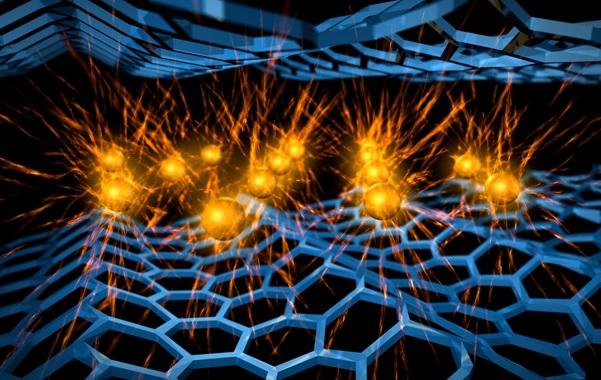
Submitted by Prof. C.J. Pickard on Wed, 12/10/2016 - 19:30
A group of scientists including Professor Chris Pickard, have discovered a potential way to make graphene – a single layer of carbon atoms with great promise for future electronics – superconducting. The study, performed in collaboration with UCL, Stanford University and the SLAC National Accelerator Laboratory is published in Nature Communications.
Graphene, a single sheet of carbon atoms arranged in a honeycomb pattern, is the thinnest and strongest known material and a great conductor of electricity, among other remarkable properties. Scientists hope to eventually use it to make ultra fast transistors, sensors and transparent electrodes. Despite its array of exciting properties, superconducting graphene, in which electricity is conducted without resistance, is yet to be achieved.
The classic way to make graphene is by peeling atomically thin sheets from a block of graphite. But it is possible to isolate these carbon sheets by chemically interweaving graphite with arrays of calcium atoms to form calcium intercalated graphite or CaC6. While it's been known for nearly a decade that this material is superconducting the new study uncovers the mechanism of superconductivity in unprecedented detail. The work therefore points to a pathway to make graphene itself superconducting – something the scientific community has dreamed about for a long time, but failed to achieve.
The combination of high purity samples and state-of-the-art light scattering experiments permitted the scientists to distinguish what the electrons in each layer were doing, revealing details of their behaviour that had not been seen before. Before now researchers were unable to confirm whether CaC6’s superconductivity came from the calcium layer, the graphene layer or both. The new discovered that electronic states associated both the calcium layer and graphene together with the resulting interaction between the two are essential for superconductivity. Thus to realise superconductivity in single graphene sheets, arrays of metal atoms must be first arranged on its surface.
Although applications of superconducting graphene are speculative and far in the future they could include ultra-high frequency analogue transistors, nanoscale sensors and electromechanical devices and quantum computing devices.
Journal link: Superconducting graphene sheets in CaC6 enabled by phonon-mediated interband interactions. S.-L. Yang, J. A. Sobota, C. A. Howard, Chris J. Pickard, M. Hashimoto, D. H. Lu, S.-K. Mo, P. S. Kirchmann & Z.-X. Shen

